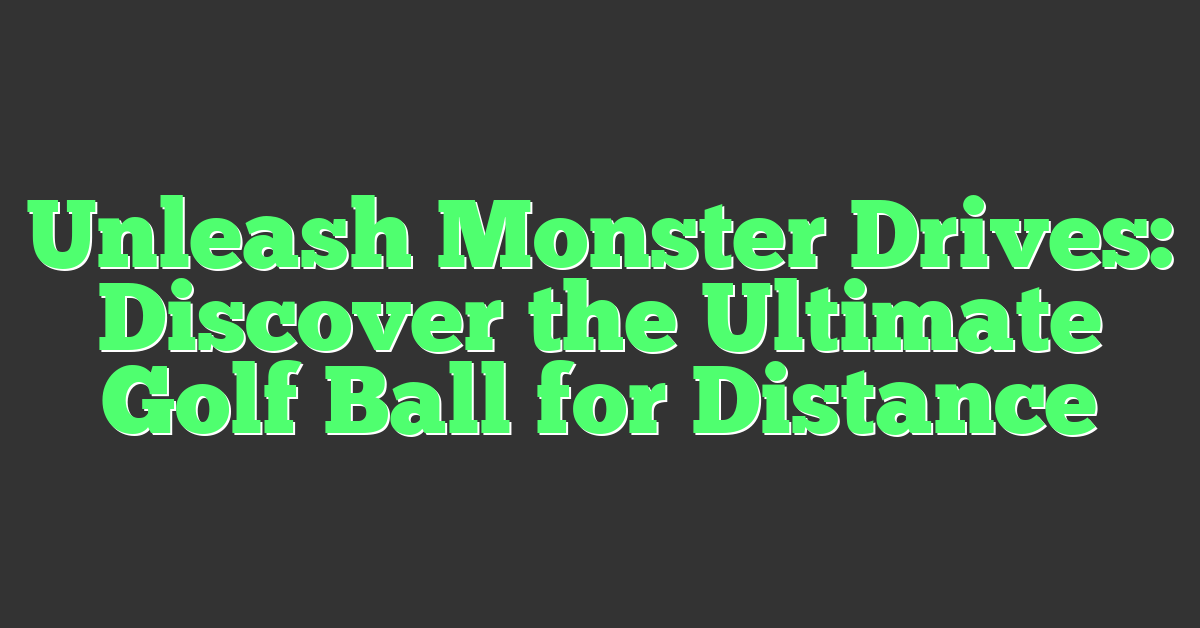Uh-oh, your four-legged friend’s got a taste for sports equipment, and now you’re worried they’ve downed a golf ball. It’s not the kind of hole-in-one you’d celebrate, right? Spotting the signs early could save your pup a lot of trouble.

So, how do you tell if your dog’s new “toy” has become an unwanted guest in their belly? Let’s dive into the telltale signs that’ll help you figure out if it’s time to rush to the vet or if Fido’s just playing caddy with his internal organs.
Signs to look for if your dog swallowed a golf ball
If you’re a dedicated golfer, you’re no stranger to the occasional lost ball. But when it’s not lost on the fairway but possibly ingested by your dog, your game shifts from the green to ensuring your pup’s health. Knowing what to look for can make all the difference.
Watch closely for any changes in your dog’s behavior. A swallowed golf ball may cause discomfort that manifests in several ways. For starters, if they’re suddenly less energetic or show a lack of interest in their usual activities, it’s time you pay attention. Dogs are naturally playful, so any decrease in activity is noteworthy.
Vomiting is another sign you can’t ignore. If your dog tries to bring up their food without success or experiences dry heaving, there’s a chance something’s obstructing their digestive tract. The rigid structure and size of a golf ball can cause your dog to struggle with nausea.
Don’t overlook changes in appetite either. A swallowed object like a golf ball can make your furry friend feel full, leading to a refusal of meals. Likewise, pay attention to their bowel movements. Difficulty passing stool or diarrhea can indicate something’s amiss.
Some more serious symptoms that warrant immediate attention are:
- Abdominal pain or swelling
- Excessive drooling
- Lethargic or depressed behavior
- Coughing or gagging
Your four-legged companion might also show signs of distress or pain when touched around the abdomen area. It’s crucial to heed these symptoms without delay.
Always keep an eye on your dog post-incident. Subtle changes can escalate quickly, and what might seem minor could be a precursor to something more severe. Your vigilance can save you and your dog from a multitude of problems down the line. Remember, when in doubt, consult your veterinarian—they’ll provide expertise and peace of mind.
Physical symptoms to watch out for
In your journey to ensure your furry caddie’s health, detecting the physical signs that your dog has swallowed something as mischievous as a golf ball is key. As a seasoned golfer, you’re trained to observe the finest details of the course—which can help in spotting the slightest changes in your dog’s well-being.
First off, keep an eye out for any difficulty or straining during bowel movements. Just like an obstructed golf shot, a golf ball in your dog’s system can lead to troublesome blockages. Persistent trouble in this area warrants immediate attention.
Next up, monitor for any abnormalities in stomach size or shape. A swollen abdomen could be comparable to an inflated golf ball—it simply doesn’t belong. Accompanying this, be vigilant for signs of abdominal pain. If your pup yelps or whinces when you gently press around their belly just like they might when avoiding a belly rub, it’s a red flag.
Check for gums that seem pale or white; it’s like finding a brown patch on a well-kept green—unnatural and of concern. Healthy gums should be as lush and pink as a well-maintained fairway. Also, watch for labored breathing or hacking coughs; these aren’t normal, just like disrupted breathing isn’t part of a smooth golf swing.
- Excessive drooling
- Unexplained vomiting
- Sudden lethargy or lack of interest in playing fetch
These symptoms are equivalent to unexpected bogeys on your scorecard—they need to be addressed promptly. Keep in mind your dog won’t always show the obvious distress of having something stuck inside them, much like the subtle signs of an impending storm on a sunny golf day.
Throughout this ordeal, maintain a log of any irregularities in behavior or health. Just as you would analyze a post-round scorecard for insight into your game, this record can give your vet a clearer picture. Remember, a swift response can make all the difference, just like a timely adjustment to your swing can save your game.
Behavioral changes that may indicate a swallowed golf ball
You know the importance of observation in golf—picking up on the subtle breaks in a green or reading an opponent’s tells. Similarly, observing your dog’s behavior is crucial, especially when you suspect something is amiss, like the possibility of them having swallowed a golf ball.
Firstly, keep an eye on your dog’s energy levels. A sudden dip in stamina or unwillingness to engage in play, particularly a round of fetch which they typically relish, could be a sign. While it’s not unusual for dogs to have off days, a noticeable and persistent lack of enthusiasm might be cause for concern.
Watch for changes in eating habits. A once voracious eater turning their nose up at dinner time is a red herring you can’t overlook. Swallowing a foreign object, like a golf ball, could cause discomfort or even pain that turns a normally hearty appetite into a sniff and walk away.
You’re familiar with the intense concentration needed for executing a perfect swing. Apply that same concentration to listening for odd noises when your dog is eating or drinking. If they’re making unusual gulping or retching sounds as they try to swallow, it’s like finding yourself in a rough; it’s not where you want to be, and it indicates trouble.
Monitor how your dog interacts with other pets and family members. A typically sociable pup turning reclusive or reacting sharply to touch, particularly around the abdomen, might be signaling internal distress stemming from an obstruction.

| Behavioral Sign | Potential Indication |
|---|---|
| Decrease in energy/sadness | General distress from a foreign object |
| Lack of interest in food | Discomfort or pain |
| Unusual noises during feeding | Difficulty swallowing |
| Changing social interactions | pain or discomfort in the abdomen |
Always remember, subtle changes can speak volumes. As when mastering tricky putts, the details can make or break the situation. Keep a close watch on your furry friend; your vigilance could save them from a hazard more serious than any sand trap.
Steps to take if you suspect your dog swallowed a golf ball
Realizing that your dog might have swallowed a golf ball can be worrying. The first thing you’ll want to do is avoid panic. Dogs can sense your stress which could make them uneasy, so stay calm to help keep your dog relaxed. Keep in mind that quick action can make all the difference, so here’s how to proceed:
- Assess your dog’s behavior closely. If you notice unusual lethargy or discomfort, it might be a sign that the golf ball is causing an obstruction.
- Check your dog’s vomit if they have been sick. It’s unpleasant but necessary as it could contain clues about what’s happening inside their tummy.
- Feel your dog’s abdomen gently. You’re looking for any signs of swelling or discomfort that might indicate the presence of a foreign object like a golf ball.
Once you’ve seen signs that suggest a swallowed object:
- Contact your veterinarian immediately. Even if you are unsure, it is always best to err on the side of caution and seek professional advice.
- Don’t try to induce vomiting unless instructed by a professional. This could complicate the situation or harm your dog.
- Prepare for a visit to the vet. Collect any relevant information that could aid the diagnosis, such as when the ball went missing and any symptoms you’ve observed.
- Keep an eye on your dog and take note of any changes while you wait for your appointment. Make sure that your pet keeps breathing normally and does not go into distress.
Remember, time is critical. A golf ball could cause a life-threatening blockage, so it’s crucial to act swiftly. Vets have the expertise to handle these situations, so your job is to assist them by providing accurate information and getting your dog the help it needs as soon as possible.
Veterinary examination and treatment options
Once you’re at the vet’s office, they’ll take the reins with a thorough examination. Your vet may start with a physical assessment, which includes palpating your dog’s abdomen to feel for any foreign objects. If they suspect that the golf ball hasn’t passed, x-rays or an abdominal ultrasound might be necessary. These imaging tests can confirm the presence of a golf ball inside your dog and help determine the location.

Here’s what might follow next:
- X-rays: These provide a clear picture of dense materials like golf balls.
- Ultrasound: This can show the movement of the intestines and indicate obstruction.
- Endoscopy: If the object is within reach, this non-surgical procedure allows the vet to retrieve the golf ball utilizing a flexible tube with a camera and retrieval tools.
Table: Common Diagnostic Tools for Suspected Foreign Objects
| Diagnostic Tool | Purpose | Method |
|---|---|---|
| X-rays | Visualize dense objects | High-energy radiation to create images of the body |
| Ultrasound | Assess organ movement | Sound waves to produce images of the body’s interior |
| Endoscopy | Retrieve or visualize objects | Tube with a camera inserted into the gastrointestinal tract |
Treatment options vary based on the diagnostic findings:
- Medical management: If the ball is small enough and your dog isn’t in distress, your vet may decide to wait to see if it’ll pass on its own.
- Endoscopic removal: If the ball is within reach and your dog is stable, this minimally invasive procedure could be the first choice.
- Surgery: In cases where the ball is causing a blockage or other complications, surgery might be inevitable to remove the golf ball and repair any damage.
Post-Examination Care
Your vet’s recommended care plan will likely include a dietary regimen, possibly with increased fiber to help move things along. Alongside this, your furry friend might need medications to ease discomfort or prevent complications. Close monitoring at home is crucial. If you observe any changes in behavior or health, it’s paramount to notify your vet immediately – every moment matters when dealing with potential blockages.

Conclusion
Remember, your quick thinking could save your dog’s life in the event they’ve swallowed a golf ball. Trust your instincts and don’t hesitate to seek professional help. Keep a close eye on your furry friend and be prepared to provide your vet with all the necessary details. With prompt action and proper care, you’ll give your dog the best chance at a full recovery. Here’s to ensuring your pup’s safety and well-being!










